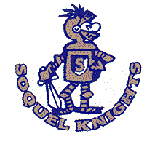Primary Source Information
Picture from Cabrillo College Library 10 Handbook

Databases for Searching for Primary Sources
Opposing Viewpoints -- Santa Cruz Public Library Databases
EBSCOhost-- Santa Cruz Public Library Databases
U.S. History in Context-- Santa Cruz Public Library Databases
World History in Context -- Santa Cruz Public Library Databases
SIRS Issues Researcher -- State of California
Encyclopedia Britannica -- State of California and Santa Cruz Public Library Databases
Primary and Secondary Sources
Definitions:
-
Primary Information comes straight from the people or world that you are researching. It could be called “hands-on” information. A primary source is an original object or document; the raw material or first-hand information. If you were assigned to do research on health care in Santa Cruz County you might write a survey or questionnaire and ask people to give you their opinion of health care in Santa Cruz. Your results of the survey would be primary information. If you are researching the effect of pollution on marine mammals, you might talk to an expert in the field such as someone from Long Marine Lab in Moss Landing. The results of your interview would be primary information. In general diaries, letters, interviews, autobiographies, historical photographs are good sources of primary evidence. There is no better way to study the past than through using original, primary source documents produced within the time period in question.
-
Secondary Information will most likely comprise the majority of your research and is usually much easier to find. Secondary information is one step removed from the original and usually involves examination or commentary on the primary source of information. Good examples of secondary sources are biographies, encyclopedias and magazine articles.
Identify each source of information as either Primary Information (PI) or Secondary Information (SI).
1. Interviews ______ 6. Diaries ______
2. Biographies ______ 7. Photographs ______
3. Encyclopedias ______ 8. Surveys ______
4. Magazine Articles ______ 9. Questionnaires ______
5. Autobiographies ______ 10. Letters ______
Why is it a good idea to try to include some Primary Information in your research?
________________________________________________________________________
________________________________________________________________________
________________________________________________________________________
Primary Sources on the Internet
The Library of Congress -- American Memory
Access NewspaperARCHIVE is a program that gives public libraries and K-12 schools around the world access to NewspaperARCHIVE.com's historical newspaper database. With this service, students and library patrons can browse, view, save and print over 100 millions of newspaper pages dating from 1750 to 1977, all through your institution.
Calisphere is a service of the UC Libraries --a world of primary sources and more
Awesome Stories -- Enjoy these stories as you see thousands of hand-selected and relevant pictures, slide-shows, videos, audio-clips, documents and other primary sources linked, in context, where you need them.
The Gilder Lehrman Institute of American History
The Avalon Project at the Yale Law School -- Documents in law, history and diplomacy
EuroDocs: Online Sources for European History
FREE--Federal Resources for Educational Excellence
